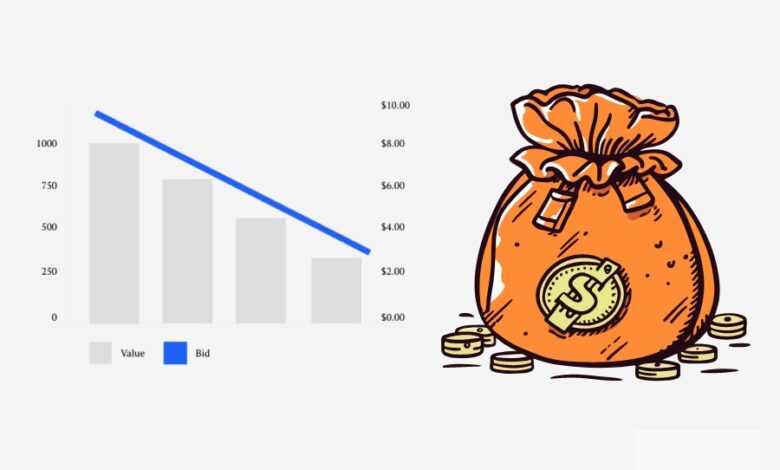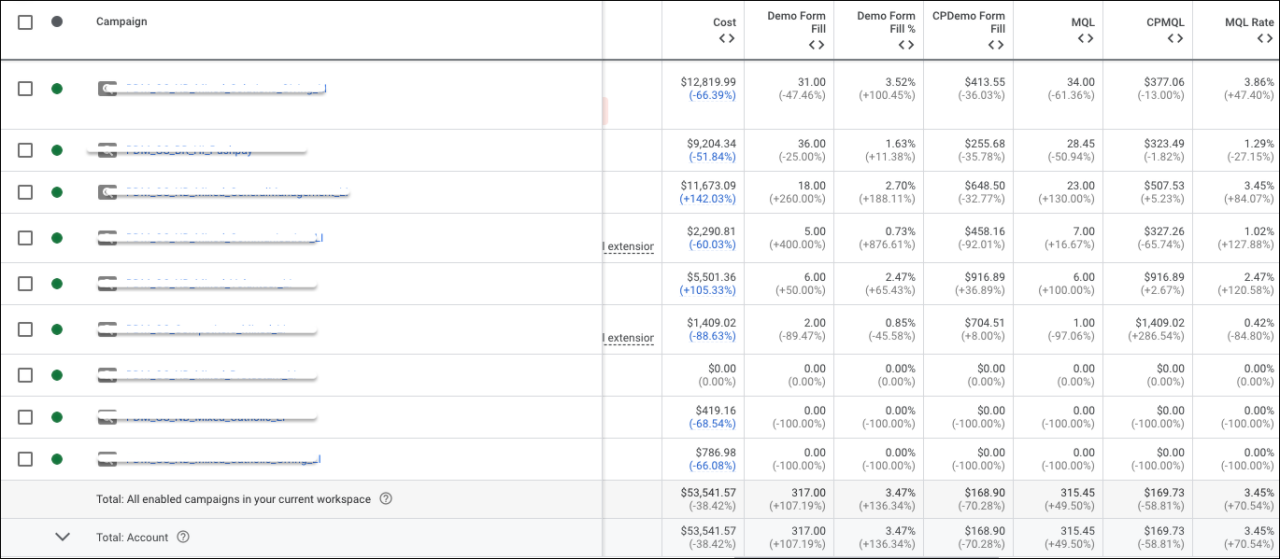
Value-Based Bidding A Comprehensive Guide
Value based bidding – Value-based bidding is transforming how businesses approach online advertising. Instead of simply focusing on clicks or impressions, it prioritizes the long-term value a customer brings to your company. This approach delves into understanding customer lifetime value (CLTV) and aligning ad spend with those valuable customers. This guide explores the core principles, implementation strategies, and benefits of value-based bidding, covering everything from defining the concept to analyzing future trends.
This approach goes beyond simple click-based models, focusing on the total revenue generated by each customer over their entire relationship with your company. By understanding the true value of each customer, businesses can optimize their advertising budgets for maximum return on investment (ROI).
Defining Value-Based Bidding
Value-based bidding is a revolutionary approach to online advertising that shifts the focus from simply acquiring clicks or impressions to maximizing the return on investment (ROI) for advertisers. It goes beyond superficial metrics to consider the actual value a customer brings to the business. This holistic perspective allows for more strategic and effective ad campaigns, ultimately leading to higher profitability.Value-based bidding strategies recognize that not all clicks or impressions are created equal.
A click from a qualified lead, for example, is significantly more valuable than a click from someone unlikely to convert. By focusing on the predicted value of each potential customer, advertisers can optimize their campaigns for long-term growth and sustainability.
Core Principles of Value-Based Bidding
Value-based bidding is fundamentally built upon the concept of assigning a monetary value to each potential customer. This value is often derived from a combination of factors, including historical data, demographics, and predicted behavior. This process allows advertisers to prioritize high-value leads, improving conversion rates and minimizing wasted ad spend. The core principle rests on accurate prediction and subsequent optimization.
Key Differences from Traditional Bidding Methods
Traditional bidding methods, like cost-per-click (CPC) or cost-per-thousand impressions (CPM), primarily focus on the cost of acquiring an impression or click. In contrast, value-based bidding considers the predicted lifetime value (LTV) of a customer. This difference in focus is crucial. Value-based bidding optimizes for long-term ROI, while traditional methods often prioritize immediate results. This distinction underscores the strategic shift from short-term gains to sustainable, profitable growth.
Various Value-Based Bidding Models
Several value-based bidding models exist, each with its own strengths and weaknesses. Understanding these models allows advertisers to select the best approach for their specific needs. Choosing the appropriate model is critical for maximizing campaign effectiveness.
| Bidding Model | Description | Advantages | Disadvantages |
|---|---|---|---|
| Lifetime Value (LTV) Bidding | This model prioritizes bidding on customers with the highest predicted lifetime value. It focuses on long-term profitability by estimating the total revenue a customer will generate throughout their relationship with the business. | Maximizes long-term ROI; prioritizes high-value customers; potentially reduces customer acquisition cost. | Requires accurate LTV prediction models; may struggle to adapt to changing customer behavior; can be complex to implement. |
| Customer Relationship Value (CRV) Bidding | This model emphasizes the value of an ongoing relationship with a customer. It considers factors like repeat purchases, referrals, and customer feedback. | Focuses on customer retention and loyalty; drives repeat business; often results in higher customer lifetime value. | Requires tracking customer interactions and relationships; potentially more challenging to predict than LTV; might require sophisticated CRM systems. |
| Opportunity Cost Bidding | This model takes into account the opportunity cost of not acquiring a high-value customer. It considers the potential revenue lost by not attracting a particular customer. | Helps maximize the value of each acquisition; considers the potential loss from missed opportunities; potentially enhances conversion rates. | Requires careful consideration of market dynamics and competitive pressures; complex to implement without proper market research; can be difficult to accurately assess opportunity costs. |
Implementing Value-Based Bidding Strategies
Value-based bidding is no longer a futuristic concept; it’s a crucial strategy for maximizing return on ad spend (ROAS). It moves beyond simply clicks and impressions, focusing on the actual value a customer brings to your business. This approach requires a deep understanding of your customer’s journey and the revenue they generate. Implementing this strategy effectively involves meticulous planning and execution, focusing on data-driven decisions.Understanding the nuances of your target audience and their potential lifetime value is paramount.
Value-based bidding is all about aligning your ad spend with the actual value a customer brings. It’s a smart way to optimize your ROI, and a recent spotlight on ignite marketer of the week lara hood balazs cmo gm at intuit shows just how impactful this strategy can be in today’s market. Ultimately, value-based bidding is about getting more bang for your buck, and it’s a key skill for any successful marketer.
It’s not just about attracting more visitors; it’s about attracting the right visitors, those who are most likely to convert into valuable customers. This approach requires a holistic understanding of your business goals and a clear definition of what constitutes a valuable customer.
Steps in Implementing a Value-Based Bidding Strategy
Implementing a value-based bidding strategy requires a systematic approach. It’s not a one-time action but an ongoing process of refinement and optimization. Key steps include:
- Defining Value: Clearly define what constitutes a valuable customer. Is it based on revenue generated, average order value, or customer lifetime value (CLTV)? This involves understanding your business goals and aligning your bidding strategy accordingly. Consider the specific value each customer segment brings to your company.
- Data Analysis: Value-based bidding hinges on data analysis. Identify key metrics like customer acquisition cost (CAC), conversion rates, and customer lifetime value (CLTV). Thorough analysis will reveal which customer segments are most profitable. Use data to identify trends and patterns in customer behavior and preferences.
- Conversion Tracking: Accurate conversion tracking is essential for evaluating the effectiveness of your bidding strategy. Track all significant conversions, from initial lead generation to final purchase. This allows for a detailed analysis of the customer journey and how different campaigns perform in relation to value.
- CLTV Calculation: Calculate customer lifetime value (CLTV). This metric helps predict the total revenue a customer will generate throughout their relationship with your business. Various methods exist for calculating CLTV, and the most appropriate method depends on the specific data available. Common methods include using historical data, predictive models, or a combination of both.
- Bidding Strategy Optimization: Continuously monitor and adjust your bidding strategy based on the performance data. Identify which campaigns and ad groups are delivering the highest value and allocate resources accordingly. This ongoing optimization ensures your strategy remains aligned with your goals.
Importance of Data Analysis in Value-Based Bidding
Data analysis is the bedrock of value-based bidding. Without accurate data, you’re flying blind. Understanding key metrics such as conversion rates, customer acquisition cost (CAC), and customer lifetime value (CLTV) is critical for optimizing your campaigns.Data analysis reveals patterns in customer behavior and preferences. By understanding these patterns, you can tailor your campaigns to attract the most valuable customers.
Identify high-value customer segments and target them more effectively. This precision allows you to focus your resources where they will generate the highest return.
Role of Conversion Tracking in Value-Based Bidding
Conversion tracking is crucial for evaluating the effectiveness of your value-based bidding strategy. It provides a clear picture of how different campaigns and ad groups perform in relation to desired conversions. Comprehensive tracking encompasses various stages, from initial engagement to final purchase.Thorough conversion tracking enables a granular understanding of the customer journey. It allows you to identify bottlenecks and optimize each stage to maximize value.
Conversion tracking allows for a more targeted approach to your campaigns, ensuring they focus on high-value customers.
Methods for Calculating Customer Lifetime Value (CLTV)
Several methods exist for calculating customer lifetime value (CLTV). The most suitable method depends on the available data and the specific business context.
- Historical Data Method: This method uses historical data on customer behavior to predict future value. Calculate average revenue per customer and multiply it by the average customer lifespan. Example: If a customer spends $100 per year and remains a customer for five years, their CLTV is $500.
- Predictive Modeling Method: This method uses statistical models to predict future customer behavior. Machine learning algorithms can predict future customer value based on historical data and other relevant factors. This approach is more sophisticated and can capture complex relationships between customer characteristics and value.
- Combination Approach: Often, a combination of both historical data and predictive modeling methods provides the most accurate CLTV estimations. This allows for a more comprehensive understanding of customer value. This can be more accurate, particularly when dealing with complex data sets or customer behaviors.
Tools and Platforms for Value-Based Bidding
Several tools and platforms facilitate value-based bidding. These platforms offer the necessary functionalities for data analysis, conversion tracking, and bidding optimization.
- Google Ads: Google Ads offers robust conversion tracking and bidding features. It allows for detailed analysis of campaign performance and adjustment of bidding strategies.
- Bing Ads: Bing Ads provides tools for conversion tracking and targeting high-value customers. It enables data-driven bidding decisions.
- Marketing Automation Platforms (e.g., HubSpot, Marketo): These platforms offer tools for tracking customer interactions and calculating CLTV. They allow for more granular analysis of customer behavior and value.
Common Value-Based Bidding Tools
| Tool | Description | Features | Pricing |
|---|---|---|---|
| Google Ads | Powerful advertising platform | Conversion tracking, detailed reporting, automated bidding | Performance-based |
| Bing Ads | Microsoft advertising platform | Conversion tracking, advanced targeting options | Performance-based |
| HubSpot | Marketing automation platform | Customer relationship management (CRM), lead nurturing | Subscription-based |
| Marketo | Marketing automation platform | Lead scoring, campaign management, detailed reporting | Subscription-based |
Benefits and Challenges of Value-Based Bidding: Value Based Bidding

Value-based bidding, a strategy shifting focus from clicks to conversions and customer lifetime value, presents exciting opportunities for businesses. It’s a departure from traditional cost-per-click (CPC) models, moving toward a more nuanced understanding of the return on investment (ROI) associated with each prospect. This shift necessitates a deeper understanding of both the advantages and challenges inherent in this approach.Value-based bidding goes beyond simple clicks, aiming to identify and target prospects most likely to generate substantial revenue.
Value-based bidding strategies are crucial for maximizing ad spend, but understanding how user behavior metrics affect ad rankings is key. For example, insights from user behavior metrics affect rankings improve can significantly influence the effectiveness of your bids. Ultimately, a deep dive into these metrics can help refine your value-based bidding approach for optimal results.
This refined approach often results in a more targeted and efficient allocation of marketing resources. However, successful implementation requires a strong understanding of your target audience and a sophisticated analytical framework.
Potential Advantages of Value-Based Bidding
Value-based bidding offers a multitude of potential benefits. By prioritizing conversions and long-term customer value, businesses can significantly enhance their ROI. This approach allows for a more sophisticated understanding of customer lifetime value, enabling better resource allocation and more accurate forecasting of campaign performance.
- Improved ROI: Value-based bidding, by focusing on high-value prospects, directly correlates with a higher return on investment. This is achieved by prioritizing leads likely to generate significant revenue over those with a lower potential for long-term profitability.
- Enhanced Customer Acquisition Cost (CAC) Management: A precise understanding of the lifetime value (LTV) of a customer allows businesses to optimize their CAC. This is crucial for achieving a more sustainable and profitable marketing strategy.
- Data-Driven Decision Making: Value-based bidding leverages data to predict customer value and optimize bids. This leads to more informed decisions and a higher probability of success.
- Increased Customer Retention: Targeting high-value prospects often translates into a more engaged customer base, fostering loyalty and repeat business.
Challenges Associated with Implementing Value-Based Bidding
While value-based bidding offers substantial potential, it also presents challenges. One key challenge is the need for robust data and accurate estimations of customer lifetime value. Without precise data, the approach can be ineffective. Another hurdle is the complexity of implementing sophisticated models for calculating customer lifetime value. Finally, successful implementation requires a culture of data-driven decision-making within the organization.
- Data Requirements: Implementing value-based bidding requires comprehensive data on customer demographics, behavior, and past purchases. This necessitates robust data collection and analysis processes.
- Model Complexity: Developing accurate models for calculating customer lifetime value can be complex. Choosing the right model and ensuring its accuracy is crucial for success.
- Implementation Costs: Adopting value-based bidding may require significant investment in new technologies, tools, and expertise.
- Data Privacy Concerns: The collection and analysis of customer data raise concerns about data privacy and security. Adhering to relevant regulations and implementing robust security measures is critical.
How Value-Based Bidding Improves ROI
Value-based bidding directly impacts ROI by focusing on the long-term value of a customer, rather than just a single interaction. By targeting prospects with the highest potential for revenue generation, businesses can allocate their marketing budgets more effectively. A more precise understanding of the return on investment for each customer allows for better allocation of resources.
Examples of Successful Implementations
Several businesses have successfully implemented value-based bidding strategies. For instance, e-commerce companies often use historical purchase data and predicted future spending to optimize bidding strategies for high-value customers. Similarly, SaaS companies frequently employ customer lifetime value models to target users likely to become high-paying subscribers.
Summary Table
| Aspect | Advantages | Disadvantages |
|---|---|---|
| Cost | Potentially lower CAC, optimized resource allocation | Requires significant investment in data collection and analysis, model development, and potentially new tools |
| Time | Long-term ROI, sustained growth | Longer implementation timeline, higher learning curve |
| Effectiveness | Improved conversion rates, increased customer lifetime value | Requires robust data, careful model selection, and skilled analysts |
Value-Based Bidding in Specific Industries
Value-based bidding isn’t a one-size-fits-all strategy. Its effectiveness hinges on understanding the unique needs and value propositions of each industry. This section delves into how different sectors leverage value-based bidding, showcasing tailored strategies and successful implementations.Value-based bidding transcends simple click-through rates. Instead, it focuses on quantifying the actual return on investment (ROI) that a particular customer interaction brings.
This requires a deep understanding of the customer journey and the specific value proposition of the product or service within each industry. This approach can significantly improve campaign performance by targeting customers more likely to convert and providing a more efficient use of advertising budget.
E-commerce Applications
E-commerce companies can employ value-based bidding to optimize their advertising campaigns for conversion value. Instead of simply bidding on clicks, they can focus on bidding on users likely to complete a purchase, leading to a more substantial return on ad spend. For example, a retailer might bid higher on users who have previously shown interest in a specific product or category.
By understanding the value each user segment brings, they can fine-tune their bids and achieve a higher ROI. Consider a customer who frequently visits the site and adds items to their cart, but doesn’t complete the purchase. Value-based bidding can target this customer with personalized offers and promotions designed to drive conversion.
SaaS Value-Based Bidding Strategies, Value based bidding
SaaS companies often focus on lifetime value (LTV) in their value-based bidding strategies. They can bid higher on leads exhibiting characteristics indicative of high LTV, such as those actively engaging with free trials or downloading white papers. Instead of just acquiring customers, SaaS companies prioritize acquiring the right customers. This can involve using data points like user behavior, product engagement, and churn rate predictions to predict the potential long-term revenue generated by a particular lead.
Value-based bidding is all about optimizing ad spend by focusing on the actual value a customer brings. It’s a smart way to get the most out of your budget, and it’s a strategy that’s been proven effective. For instance, Jessica Carlin, a prominent figure in the digital marketing world, has discussed the importance of aligning advertising campaigns with real customer value, which directly connects to successful value-based bidding strategies.
Her insights, particularly those found in her work related to Yelp reviews, are very helpful for those who want to learn more about the topic and are available on her Jessica Carlin Yelp page. Ultimately, mastering value-based bidding is crucial for any business looking to maximize their ROI.
Financial Services: Tailored Approaches
In financial services, value-based bidding must be highly precise and ethical. It can be used to target high-net-worth individuals (HNWIs) or customers with specific financial needs. A financial institution might bid higher on users demonstrating a strong interest in a particular product, such as a high-yield savings account, based on their browsing history or interactions with financial calculators.
The strategy must adhere to strict compliance and privacy regulations.
Healthcare Industry Considerations
Value-based bidding in healthcare requires a cautious and ethical approach. The goal isn’t simply to generate leads; it’s to connect patients with the right healthcare providers. For example, a hospital might target users searching for specific medical procedures, based on their demographics, symptoms, and other relevant factors. The bidding strategy needs to ensure compliance with HIPAA regulations and maintain patient privacy.
The focus should be on aligning with the overall mission of the healthcare organization.
Examples of Industries Benefiting from Value-Based Bidding
- E-commerce: E-commerce companies can significantly improve their return on ad spend by targeting high-value customers. This allows them to focus on customers with a proven propensity to convert and spend more.
- SaaS: SaaS businesses can prioritize leads exhibiting strong engagement with free trials or premium content, leading to a higher likelihood of conversion.
- Financial Services: Financial institutions can identify high-net-worth individuals (HNWIs) or customers with a history of high-value transactions, optimizing their advertising spend.
- Healthcare: Healthcare providers can target patients with specific needs or conditions, matching them with the most appropriate providers. This ensures compliance with patient privacy regulations.
Future Trends in Value-Based Bidding
Value-based bidding is rapidly evolving, driven by advancements in technology and the increasing sophistication of marketing strategies. The future of value-based bidding hinges on leveraging data-driven insights and adapting to evolving consumer behaviors. This involves a shift from simply maximizing clicks to prioritizing measurable outcomes that demonstrate tangible value for both the advertiser and the consumer.The future of value-based bidding is intricately linked to the ability to predict and respond to consumer needs and preferences in real-time.
This requires a sophisticated understanding of not only the customer journey but also the impact of contextual factors and external events on their purchasing decisions. As technology progresses, the lines between traditional marketing channels and digital experiences will continue to blur, demanding a more holistic and integrated approach to value-based bidding.
Emerging Trends in Value-Based Bidding
Value-based bidding is moving beyond simply targeting demographics. Businesses are increasingly focusing on psychographics, behavioral patterns, and predictive modeling to understand the underlying motivations driving consumer choices. This allows for more targeted messaging and offers that directly address specific needs and pain points. Furthermore, the rise of personalized experiences is influencing bidding strategies, as businesses strive to tailor their offers to individual preferences.
The Role of Artificial Intelligence in Value-Based Bidding
AI is transforming value-based bidding by enabling more sophisticated and dynamic bidding strategies. AI algorithms can analyze vast amounts of data to identify patterns and predict future outcomes, allowing for real-time adjustments to bidding strategies. For instance, AI can predict which customers are most likely to convert and adjust bids accordingly to optimize return on ad spend (ROAS).
This predictive capability is crucial for maximizing value and minimizing wasted ad spend.
Utilizing Machine Learning Algorithms in Value-Based Bidding
Machine learning algorithms play a vital role in automating and refining value-based bidding processes. These algorithms can learn from historical data and identify trends that might be missed by traditional methods. By analyzing factors such as user behavior, website interactions, and past purchase history, machine learning can predict future customer actions with increasing accuracy. This allows for more precise targeting and ensures bids are placed strategically.
The Impact of Personalization on Value-Based Bidding Strategies
Personalization is no longer a luxury, but a necessity for effective value-based bidding. Businesses are utilizing data to create highly personalized experiences that resonate with individual customer needs. This approach goes beyond simply tailoring messaging; it involves adapting the entire customer journey to align with individual preferences. For example, a company selling clothing might use AI to suggest specific styles based on past purchases and browsing history, thereby enhancing customer engagement and driving conversions.
This personalized approach allows for a more meaningful connection with customers, leading to higher perceived value.
End of Discussion

In conclusion, value-based bidding presents a powerful framework for optimizing advertising campaigns. By understanding customer lifetime value and aligning ad spend with high-value customers, businesses can significantly improve their ROI. While challenges exist, the potential rewards are substantial, and the future of value-based bidding promises exciting developments. This comprehensive guide provides a foundation for anyone seeking to navigate this dynamic approach to online advertising.





